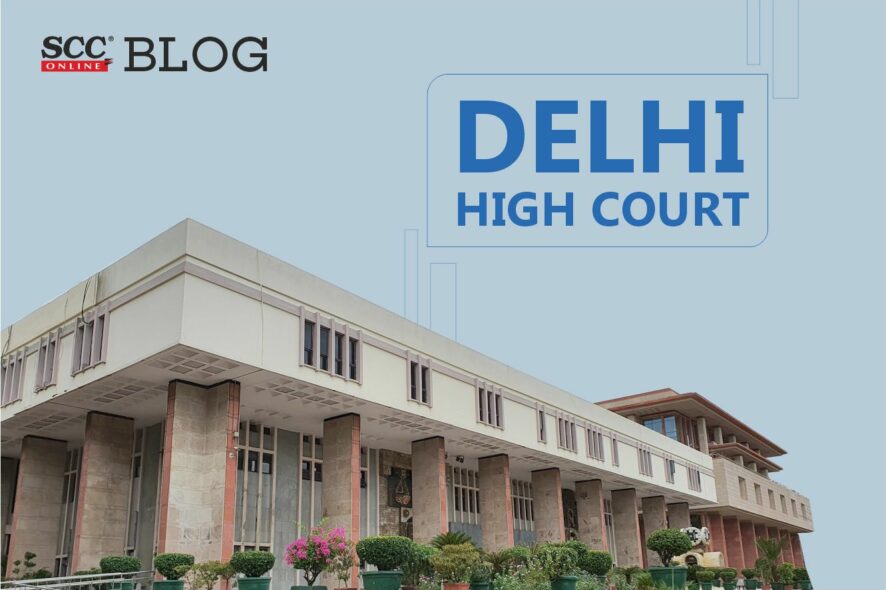Delhi High Court: In a case where an appeal was filed against the order of Controller General of Patents and Designs (Respondent) refusing the application for grant of patent ‘Notched Fastener’, the Single Judge Bench of Prathiba M. Singh, J. held that simplicity would not defeat the grant of patent and ‘Notched Fastener’ does not lack an inventive step, hence, it is patentable.
Background
The appellant company was engaged in the business of providing branding and information labelling solutions and manufactured a wide variety of labelling materials to enhance brand packaging, to carry or display information about products. It was founded in 1935 as ‘Kum Kleen Products’ and thereafter in 1990 changed its name to ‘Avery Dennison’ after merging with Dennison Manufacturing Company. The subject patent application arose out of a PCT Application which later entered the national phase in India in 2013.
The appellant filed a request for examination of the said application and in relation to which a First Examination Report (Report) was issued in 2018, with statement of objections, where the primary ground raised in the Report was lack of inventive step under Section 2(1)(ja) of the Patents Act, 1970. After the Report was issued, the appellant filed amended claims but still, the respondent maintained that the subject patent application does not merit the grant of patent. Later, a hearing was conducted, and written submissions were submitted to the respondent but still the subject patent application was refused on the ground of lack of inventive step relying on prior art. Thus, the present appeal was filed to set aside the impugned order issue by the respondent.
Submissions on behalf of the Appellant
Counsel for the appellant relied on the appellant’s patent specification, written submissions and amended claims to establish inventive step involved in the subject patent. Counsel submitted that:
1. The inventive step in the subject patent would lie in the following features:
a. Creation of the Notch;
b. Position of the Notch;
c. Shape of the Notch;
d. Direction of the Notch in relation to cross-pieces.
2. The cited prior arts were distinguishable, and the subject matter was worthy of patent protection as it involved an inventive step.
Submissions on behalf of the Respondent
1. The creation, purpose, and effect of the notch in the subject patent could be construed by a reading of prior art document. A mere change in shape or position of the notch in the subject patent would be obvious to a person skilled in the art. The shape of the notch itself cannot constitute an inventive step and would merely constitute a workshop improvement for a person skilled in the art.
2. The subject patent was an attempt aimed at evergreening of the patent since the prior art was also of the appellant.
3. There was not any substantial data provided by the appellant to substantiate their claim of economic advantage over prior art.
Thus, the counsel submitted that the subject patent did not involve an inventive step and did not merit the grant of a patent.
Question for Consideration
Whether the subject patent application lacks inventive step as defined in Section 2(1)(ja) of the Act?
Analysis, Law, and Decision
The Court considered the following points:
1. Simplicity does not defeat an invention and even simple inventions are patentable.
2. The inventive step must be assessed based on the date of priority of the subject patent and not after the publication of the same, that is, it was not permissible to do a hindsight analysis or an ex-post facto analysis.
3. One of the sure tests in analyzing the existence of inventive step would also be the time gap between the prior art document and the invention under consideration. If a long time had passed since the prior art was published and a simple change resulted in unpredictable advantages which no one had thought of for a long time, the Court would tilt in favour of holding that the invention was not obvious.
The Court noted that in the present case, the distinction between the prior art and the subject patent application primarily resided in shape, position and engagement with the notch and the way the detachment takes place when the fastening happens. Moreover, the prior art document belonged to the appellant, and the subject patent application was filed almost 18 years after the filing of the prior art. The complete specification explains the disadvantages of the prior art and sets out in clear terms the various advantages of the subject invention.
The Court further noted that there was no other prior art that was cited which dealt with fasteners in this manner and had even come close to suggesting changes in the prior art fastener stock. The Court opined that if the invention was so obvious, then any party could have made the changes in the prior art to arrive at the subject invention, which obviously had not happened.
The Court held that in the present case the improvement between the prior art and the subject invention was clearly decipherable and it did not lack inventive step. Lastly, the Court ordered that the patent should proceed for grant.
[Avery Dennison Corpn. v. Controller of Patents and Designs, 2022 SCC OnLine Del 3659, decided on 04-11-2022]
Advocates who appeared in this case :
For the Appellant(s): Advocate Rohit Rangi;
Advocate Vineet Rohilla;
For the Respondent(s): CGSC Harish V. Shankar;
Advocate Srish Kumar Mishra;
Advocate Sagar Mehlawat;
Advocate Alexander Mathai Paikaday.







